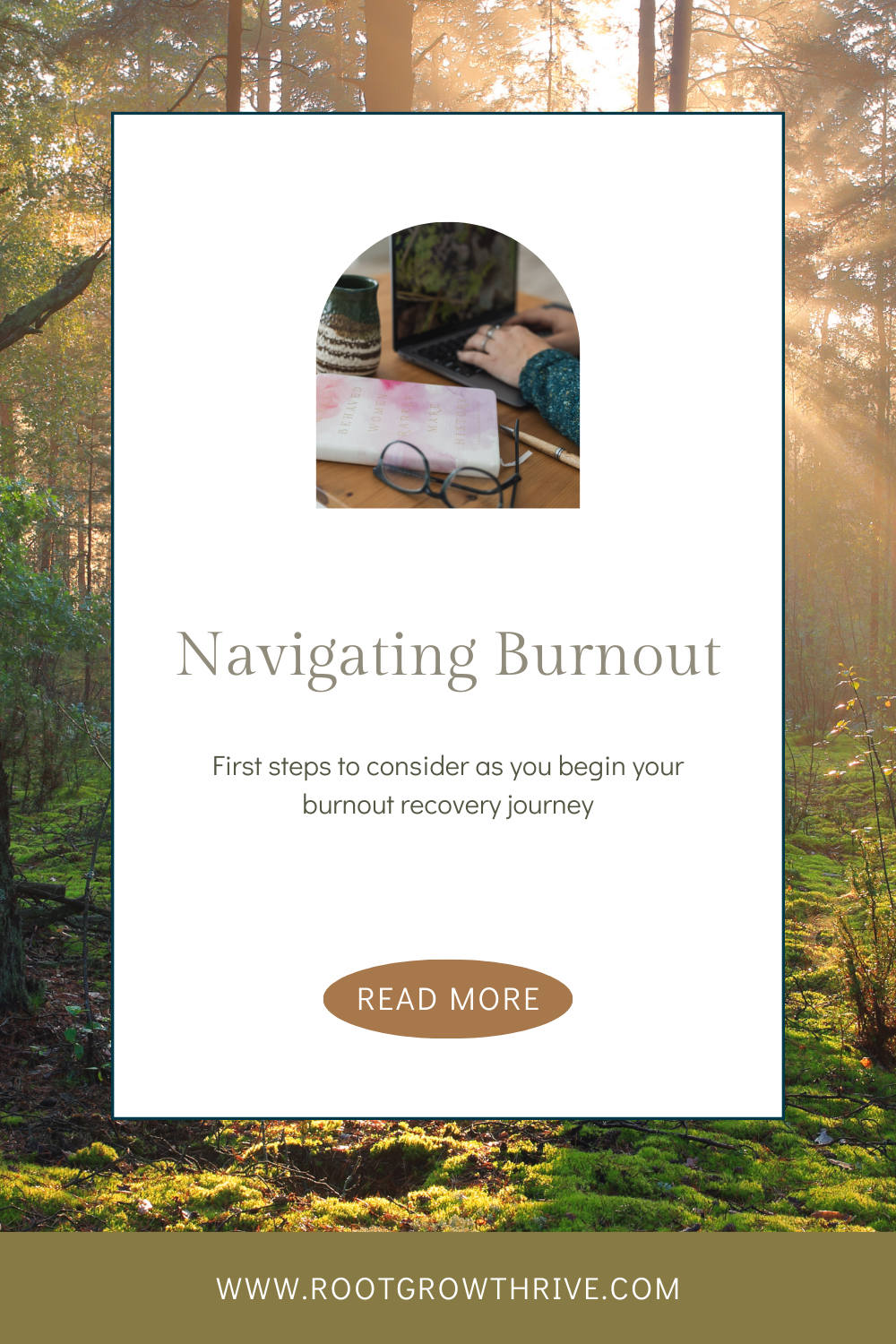Navigating Burnout: First Steps
If you’re reading this blog, more than likely you know what burnout is, and have experienced it yourself. As a burnout therapist, and someone who has been through burnout myself, I know how burnout can be a source of feeling as if there is a fork in the road. Should I go or stay? Am I cut out for this after all?
We can feel so estranged from our inner call, fully connected to our authenticity. At RGT, I companion folks back to their sense of inner peace, personal power, and purpose—and often that looks like some serious self-reflection on what brought us to that place of burnout in the first place.
Burnout is quite ubiquitous in our society—you see if everywhere—from caregivers, to nurses, to teachers, to therapists, to holistic and spiritual professionals. Our ability to give back is stymied by the collective, systemic, and personal strain we feel—and if it becomes chronic, burnout will be in the books.
In these demanding fields, professionals in caregiving fields face burnout at increasing levels, often starting with an intense and pervasive feeling of emotional exhaustion. Feeling emotionally exhausted can be the result of absorbing client’s and patient’s emotional distress day after day. I can look like feeling overwhelmed by the emotional connections with folks, or struggling to maintain a healthy work-life balance due to being emotionally spent.
When we are in this state, we try to separate personal emotions from our professional responsibilities. But this proves really challenging. Our boundaries can be strained. It becomes really hard to “put work aside.” We can also find that support is lacking—that we don’t feel connected to peers or supervisors as we don’t feel safe enough to explain our emotional strain, and fear judgement, stigma, or even consequences for our job.
Our regular self-care and emotional hygiene practices become absolutely critical when we are feeling burned out due to emotional exhaustion. Recharging back to our self-care can be as simple as clearly delineating where our needs are and what we are to do, and what is not ours to do.
Another part of burnout is struggling with the workload and time constraints within the vocational sphere. Where do you feel supported in your time off, in your balance of work and life, of your ability to leave your work if you need to due to family obligations or being sick? Session quotas or other constraints become an overhanging pressure for some professional caregivers like therapists who work in private practice or agencies. These type of practice models prioritize capitalistic gains over the need for sustainability of their healers. And, understandably, these types of practices have heavy turnover, increased burnout, and reduced sustainability of call.
Systemic Change
While systemic change is often outside of the realm of control for most caregiving professionals, we do have power. We are able to request time off, use what is rightfully ours, advocate for ourselves and our colleagues. We can respectfully decline requests for extra time burdens and model a sense of self-care that is healthy for us. We can also seek other ways outside of our job or vocation to expand into our self-nourishment. Often if we don’t have control over one sphere of our life, we can feel helpless in others’. This isn’t often true, though—seeking other places where we can have an impact and use our voice and creativity can actually improve our confidence to bring such energy into our work sphere, too.
Finally, a large portion of the burnout I see is actually vicarious trauma or secondary stress symptoms. Seeing people in pain, distress, and helplessness has a true and real effect on those who care for them over time. We too can feel overwhelemed if we aren’t careful with our own boundaires and self-care, or we can subvert this energy and become withdrawn or blunted in our world. We must find ways to use the energy of disappointment, rage, grief, and pain and in turn transmute them into something creative, something energtic like exercise or movement practices, or share with others who understand without judgement or risk. We msut find places that are trauma-informed ourselves so that we can curate healthy spaces that we can find as nuourishing on all the levels—mind, body, and soul.
Emotional Exhaustion to Recovery
By addressing the concerns of emotional exhaustion, workload and time constraints, and compassion fatigue, caregiving and therapeutic professionals can cultivate greater resilience and reduce the risk of burnout. Through proactive self-care practices, boundary setting, and access to supportive resources, caregiving professionals can conserve our well-being while continuing to provide high-quality care to those we serve.
This is why I developed an integrative lens on burnout therapy—that it isn’t just about attending to the self care, or getting rest or recovery, or a place to rant. It is whole-soul support, inclusive of the inner call that you often know deep down, so that you can reconnect to that well of knowing and find a way forward that is indeed sustainable, and, hopefully, reclaim your joy once again.
Want to connect and find a way forward in your own burnout story? Click here and let’s connect.

